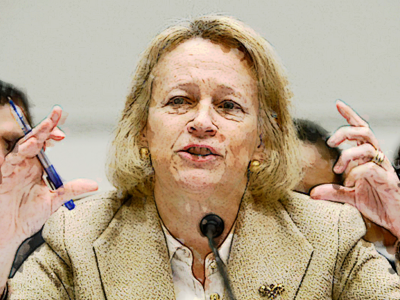
When is enough regulation enough for regulators?
Apparently, Never.
I read with interst the AdvisorOne article by Melanie Waddel entitled, “SEC’s Schapiro: Money-Market Funds’ Stable NAV Is a ‘Fiction’” in which it was reported that:
Securities and Exchange Commission Chairwoman Mary Schapiro reiterated to senators Thursday her view that further reforms to money-market funds are necessary, saying the funds still “pose a significant risk” to the nation’s economy.
Despite the fact that the SEC reformed money-market funds after the Reserve Fund “broke the buck” during the financial crisis of 2008, Schapiro said members of both political parties as well as the Financial Stability Oversight Council (FSOC) had “raised concerns” about the funds.
The 2010 reforms have not been enough, “and that’s why we’re here today,” Schapiro told the Senate Banking Committee.
I wrote in 2010 after the Dodd-Frank bill was passed that “the bill creates a Financial Stability Oversight Council”. The ten regulators in this group have the task of monitoring any systemwide risks in our financial system. They have also been given nearly unlimited power to address these risks by forcing financial firms to sell assets or close a portion of their business.
“The utopian hubris of believing such a group will do more good than harm is unfounded by human history and experience. And the assumption that such a council will be untouched by self-interest is naive beyond belief.”
The article went on to show the assumption that additional regulation is always worth the cost is based on the false idea that it will actually avoid (rather than help to cause) catastrophes:
Schapiro replied that she believes the costs of any of the proposed changes “would be far, far outweighed by the benefits of forestalling another devastating run” on money-market funds. She added that any additional reforms proposed by the agency would be released for a public comment period.
Really? Far far outweighed? What is the total amount of money ever lost in the history of the financial markets by money market’s breaking the dollar? Not that much. And Schapiro claims that the cost of regulation for the next 50 years will be far far less than this amount?
The Dodd-Frank bill can be likened to giving the government unlimited powers and asking them to eliminate evil. It sounds like a good idea in theory, but the task is impossible, and the means by which they will make the attempt is dangerous to life, liberty and the pursuit of happiness. Libertarians can’t tell you exactly why the bill is a bad idea. No one can understand the complex interaction of our financial systems that well. And that is exactly why we know the bill will do more harm than good.
And don’t expect your money market to pay you significant interest after all these regulatory costs. That isn’t part of the regulator’s concerns.
4 Responses
John Q,
As long as the banks and other financial institutions continue to engage in criminal behavior, there’s going to be demand for additional regulations. The wilingness of the market to reward those who engage in this behavior (JP Morgan Chase for example) shows that something is needed because the market doesn’t protect individual investors from the criminals.
David John Marotta
Some banks and other financial institutions will always engage in criminal behavior. People can be evil and selfish. That is not sufficient justification for additional regulations. No amount of regulation can eliminate evil.
“Idealism is fine, but as it approaches reality, the costs become prohibitive.”
– William F. Buckley Jr.
Luis
The first test showed sanctions against Capital One. Good 1 Evil 0.
David John Marotta
The high profile action against Capital One was brought by two federal regulators including the new Consumer Financial Protection Bureau (CFPB). The CFPB did not need to be created to bring this action. Any state or federal regulator could and were bringing suit. The CFPB was added to the case for publicity so that it would have something to show for their first year of regulation.
I looked up the Consumer Financial Protection Bureau’s annual budgets. They were $123M (2011) $356M (2012) and $448M (2013). Annual increases of 89% and 26% respectively.
The high profile settlement with Capital One resulted in them refunding $140M plus a $25M penalty. American Consumers are still behind hundreds of millions of dollars in lost tax revenue. Who will protect us from being fraudulently bilked by federal taxation?
Additionally, even if you were to conceded that Captial One is “evil”, slapping the compliance costs of new regulations on every honest bank will have a disastrous effect.
“New regulations from the agency, created in the aftermath of the financial crisis to protect consumers from predatory lending and other deceptive practices, have increased the cost of credit, and that translates to about 150,000 fewer jobs, according to Mark Calabria, director of financial regulation studies at the nonprofit Cato Institute.”
Frank-Dodd 1, Jobs -150,000.